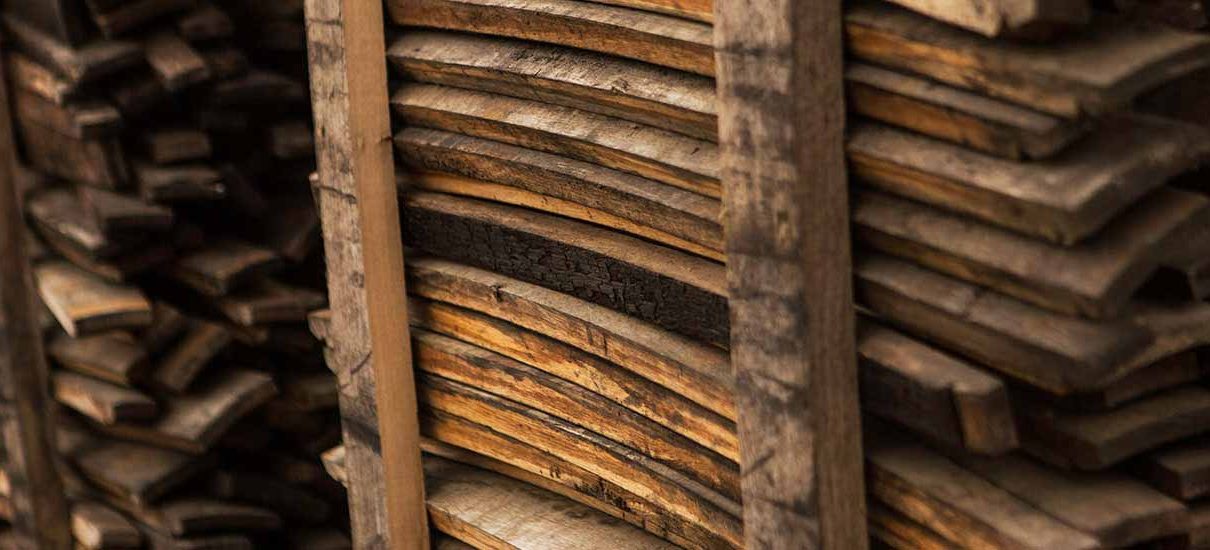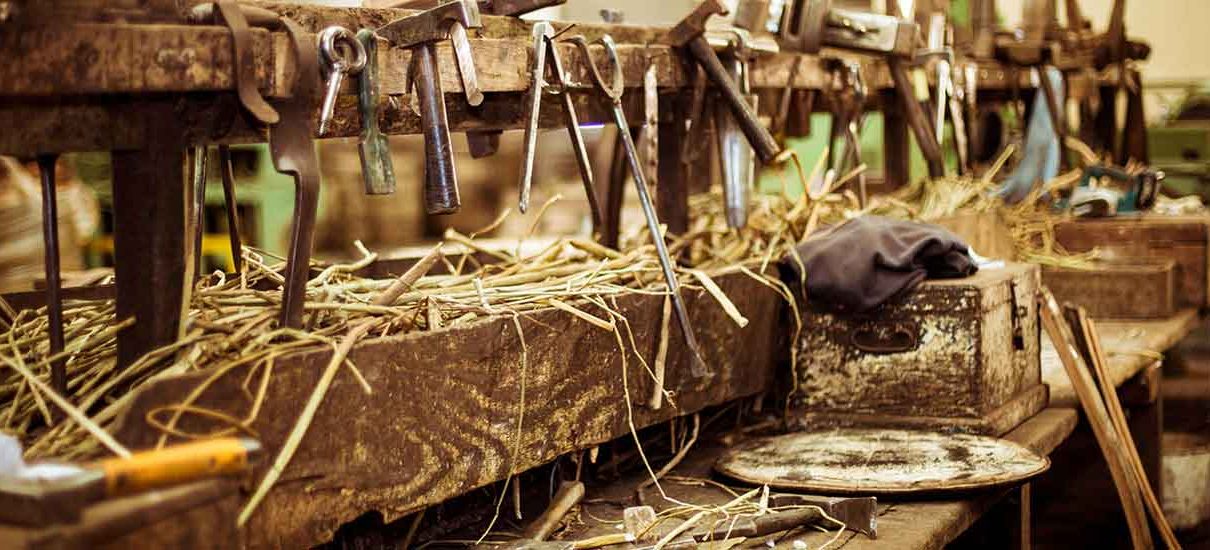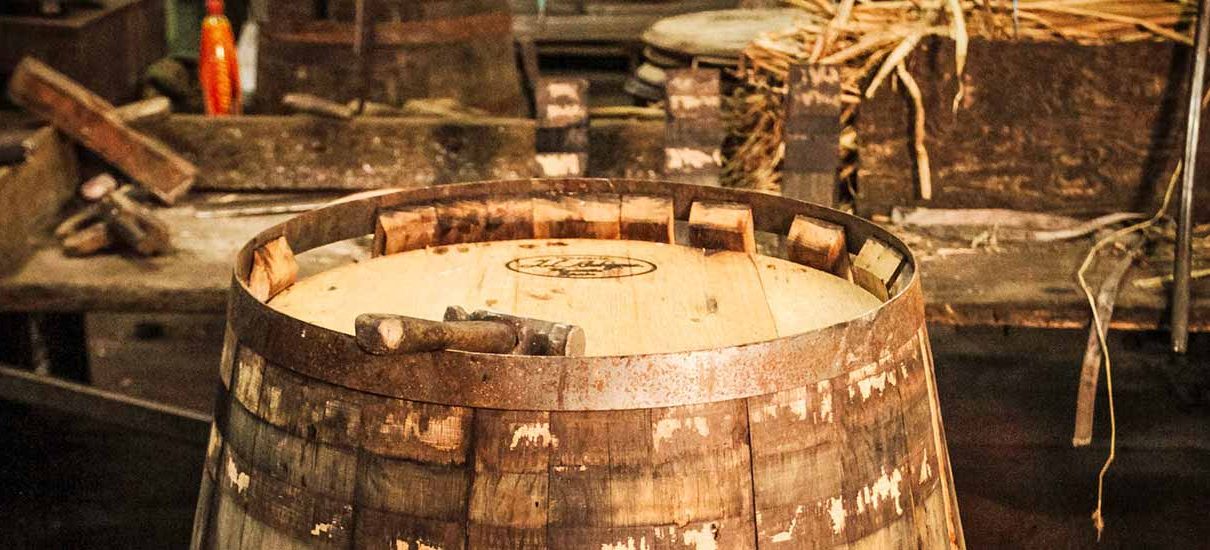
Maturation of whisky in oak casks add the complex layering of flavours, aromas, colours and textures to the distillery character that is already in a new-make spirit. Oak casks are therefore one of a Master Distiller’s most powerful tools.
The practice of making casks is a highly skilled and traditional art called coopering. A cooper uses different types of oak to make casks of a range of sizes for distilleries. Master Distillers, such as The Glenlivet’s Alan Winchester, create balanced, beautiful malts by selecting which casks to use and for how long.
“With 60-80% of the rich flavours of our whiskies coming from oak casks, coopers play an integral role in creating the heady aromas and lingering finishes of our most popular single malts.”
-ALAN WINCHESTER, MASTER DISTILLER, THE GLENLIVET

All About Oak
All casks are made from oak as, like a good marriage, it is both flexible and solid. There are two main types of oak used for whisky casks: traditional European oak (Quercus rober or Quercus patraea) and white American oak (Quercus alba). In Japan, distilleries also use Japanese oak, also known as mizunara oak (Quercus mongolica).
The European oak grows all over Europe, reaching into Turkey and Russia. Casks of European oak whisky add spicy and woody flavours, along with a slight dryness from the Gallic acid, a pseudo-tannin in the wood.
American white oak grows in the eastern US and some parts of Canada. This dense wood contains vanillins which turn into vanilla notes in the American oak whisky. Alba mellows and softens the spirit.
“Alba imparts vanillins into the spirit, which add creamy, coconut notes to a whisky.”
-ALAN WINCHESTER, MASTER DISTILLER, THE GLENLIVET
But too much of a good thing can turn out bad: the tannins, lignins and vanillins from virgin oak can end up dominating a spirit in long-term whisky maturation. So distilleries, like here at The Glenlivet, mainly use casks that have already aged other spirits or wines, such as bourbon or sherry. This also impacts on flavour: using ex-bourbon casks for maturation, for example, make the whisky more sweet and creamy with caramel and vanilla notes; while casks that have previously aged Oloroso sherry add deep, nutty and dark ripe fruit flavours.
The oak’s effect on the spirit inside decreases over time and use, so how many times a cask has been refilled also impacts on the flavour.
Whisky Cask Sizes
Coopers make casks of traditional sizes or according to specifications from a distillery or winery. The most common sizes for the whisky aging process are barrels, which are 200 litres and are used to age bourbon; hogsheads, sometimes affectionately called “hoggies”, which store 250 litres of new-make spirit; and butts, which are the biggest at 500 litres, and which have often previously matured sherry.
In a smaller cask, the surface of the wood comes into contact with a larger proportion of the liquid than in a large cask. This means maturation often takes place faster in a smaller cask.
Master Distillers take cask size into account when managing the maturation process. For example, Alan Winchester matures The Glenlivet Master Distiller’s Reserve in butts, barrels and hogsheads to develop the perfect balance of flavours.

Making Whisky Barrels
Coopers source oak planks from a sawmill, which they cut to the correct size to make staves. Staves are small planks with a sophisticated curved surface that link together to form a circular barrel. Casks are traditionally made from 32 staves, with 15 more used to seal the ends. Coopers use fire to bend the staves to the correct shape. They then plane down the staves so they fit tightly together without using nails or glue. The staves are kept in place with metal hoops. They don’t use varnish or paint as this would stop the wood from being porous. Distillers need the whisky to interact with air during aging.
All Fired Up
Coopers burn the insides of casks to convert the wood sugars into vanilla and caramel flavours. The more charring, the stronger the vanilla flavours. The carbon from the burned layer also acts like a filter to remove various impurities, such as sulphur compounds, from the spirit.
At this point the casks are ready to be handed over to the distillery. The maturation of whisky is a coupling of the cooper’s skill and the Master Distiller’s in-depth knowledge of creating flavour.

Find out more about the different types of whisky casks and how scotch is made in our guide to whisky. You can learn everything from what is cask strength to how to store whisky at home.